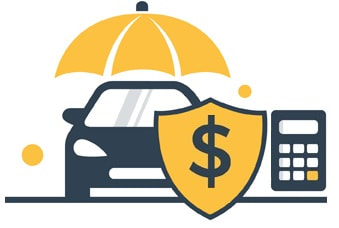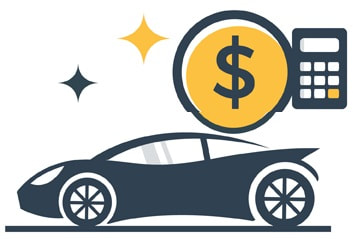Car Insurance Excess Explained
Having to claim on your car insurance is stressful enough without discovering your car insurance excess is higher than you expected. Our guide outlines what you’ll have to pay if and when you make a claim.
Updated 24 April 2024
Car insurance excess influences the price you pay for insurance and the costs you'll incur if you need to claim. Our guide explains everything you need to know about car excesses so you can balance cost with value and prepare yourself should an incident happen. Our guide covers:
Related Guides:
Important: What you choose as a car Insurance excess will drive the annual policy cost. Our video below explains how this work and other excess considerations you need to make:
Related Guides:
- Looking for a review of car insurance policies? This guide is not for you - our car insurance comparison has the details.
- Considering a third party policy? This guide is not for you - our Third Party Car Insurance Comparison explains what you need to know.
- Want to save money on your policy? Our How to Get Cheaper Car Insurance guide has you covered.
Important: What you choose as a car Insurance excess will drive the annual policy cost. Our video below explains how this work and other excess considerations you need to make:
Car Insurance Excess - Understand What's Important:
What is car insurance excess?
Car insurance excess is the dollar amount you'll be required to pay if you claim your car insurance. For example, if someone hits your car in the supermarket and your excess is $400, you'll need to pay $400 to, in most situations, to the repairer when you collect your car. The excess is part of the insurance contract.
Who decides the excess level – the car insurer or me?
Every car insurer has a standard minimum excess level – for most, it's $400 (per our car insurance guide), although some insurers allow you to drop your excess to $100. Generally, the higher your excess, the lower the annual insurance cost (all other things being equal). This allows new and existing policyholders to adjust the excess to a level they're comfortable with (known as the voluntary excess).
Important: You can only change your excess above the insurer's minimum amount, which your insurance provider decides. Most car insurance policies allow you to go up to a $1,000 or even $1,400 excess level. This additional amount over the base or standard excess is known as voluntary excess.
Important: You can only change your excess above the insurer's minimum amount, which your insurance provider decides. Most car insurance policies allow you to go up to a $1,000 or even $1,400 excess level. This additional amount over the base or standard excess is known as voluntary excess.
Do all claims require the excess to be paid, or are there some exceptions?
Many car insurers offer windscreen, window glass and lost and stolen keys. Everything else will incur Your policy will set out what's Check your policy as this can vary.
Should I increase my excess level to save on annual premiums?
It depends on whether or not you consider yourself a safe driver. However, even if you are, this won't prevent instances of people backing into you or other minor accidents that aren't your fault. A higher excess may mean cheaper annual insurance costs, but you'll need to be able to afford the excess if you later make a claim.
When do you pay excess on car insurance?
Excess is paid when you have an incident, irrespective of fault. The insurance company will take payment for excess when you claim, requiring either a bank transfer or card payment. If you're not at fault, your insurance company will still charge you an excess and chase the at-fault party later on in an effort to refund you.
Do I still have to pay the car insurance excess if the accident wasn't my fault?
It depends on the situation and the insurer. For example, State Insurance advises that if you're involved in an accident with another vehicle and the other driver caused the accident, they can, in certain situations, refund your excess. However, State needs to have enough information to identify the driver of the other vehicle that caused the accident for this to happen. This includes the car registration number, their name, address and contact information, along with their insurance information, if they have any). However, even if you can obtain these details, the insurer needs to have enough information to confirm:
Know This: There's no certainty or expectation that someone will admit fault. Only in specific cases where you're not at fault (i.e. if someone crashed into your parked car or the fence of your home) where the insurer can claim from the at-fault party's insurer can you likely have an excess refunded. On the other hand, if the other driver can't be identified, doesn't have insurance or doesn't accept liability (even if you know it was their fault), you'll have to wear the cost of the excess.
- The other party was involved, and
- They were entirely to blame for the accident, and
- They accept liability.
Know This: There's no certainty or expectation that someone will admit fault. Only in specific cases where you're not at fault (i.e. if someone crashed into your parked car or the fence of your home) where the insurer can claim from the at-fault party's insurer can you likely have an excess refunded. On the other hand, if the other driver can't be identified, doesn't have insurance or doesn't accept liability (even if you know it was their fault), you'll have to wear the cost of the excess.
How do I know how much excess I'll have to pay if and when I claim?
The excess level will be stated on your policy documents. If it's not clear or you're not sure, the best approach is to call your insurance company.
How can I find the best car insurance for my needs?
Car insurance can be complicated, and our research has proven a range of quotes for similar cover is the norm in New Zealand. Our car insurance guide independently compares various insurance providers to help you find the right car insurance deal. We outline policies based on price, cover, excesses and payment terms. Our aim is to let you obtain quotes in minutes and compare policies based on your needs.
How Much Can a Higher Voluntary Excess Save?
To illustrate how much the annual cost of a policy changes when you adjust the excess amount, we took an example of an Auckland-based Suzuki Swift insured for $5,000. We then selected four excesses, $400, $500, $750 and $1,000 to see how these excesses affect
Example: 2005 Suzuki Swift 5 Door Hatchback (4 Cylinders, 1.6 Litre Petrol 5 Speed Manual, parked on the driveway in North Shore, Auckland)
Results
As you can see in the results below, the higher the excess, the lower the annual policy costs, and vice versa.
Example: 2005 Suzuki Swift 5 Door Hatchback (4 Cylinders, 1.6 Litre Petrol 5 Speed Manual, parked on the driveway in North Shore, Auckland)
- Specs: Male, 38 year old driver, North Shore of Auckland resident, no claims history, replacement at market value (for comprehensive policy comparison), car not purchased on finance
- Agreed value: $5,000
- Additional drivers: None
- Quotes obtained: 13 April 2021
- Car Registration: LRM198
- Kilometres driven per year: Up to 20,000
Results
As you can see in the results below, the higher the excess, the lower the annual policy costs, and vice versa.
Table 1 - Excess vs Annual Policy Cost
Insurer |
$400 Excess |
$500 Excess |
$750 Excess |
$1,000 Excess |
$629.45 |
$595.97 |
$529.00 |
$475.42 |
|
$620.56 |
$559.48 |
$528.93 |
$498.39 |
|
$606.46 |
$571.96 |
Not Offered |
$514.46 |
|
$521.40 |
$480.48 |
$419.16 |
$384 |
Types of Car Insurance Excesses
There are three common excesses that apply to any single car insurance policy:
Example 1: Tower's standard car insurance policy, their graduated and additional excesses are as followed:
Age related excesses
Driver history related excesses
Driver licence related excesses
Example 2: AA's standard car insurance policy, their graduated and additional excesses are as followed:
Excess if a driver under 25 years of age was driving, using or in charge of your car at the time of the incident:
- Standard Excess: The insurer’s standard policy excess for the type of insurance. In most cases, this will be $400 or $500 for vehicle policies.
- Voluntary Excess: Car insurance companies allow you to increase your excess amount in exchange for a reduction in premium. For example, if your excess is $800 ($400 standard and $400 voluntary), you will likely pay the cost of small claims (i.e. panel beating from minor dings) yourself rather than making a claim.
- Graduated or Additional Excess: Car insurers increase their standard excesses when a young driver has an incident. For example, the policy may stipulate a $400 excess if an adult is driving but $1,500 if a young person (i.e. under 21-year-old) is driving. The graduated excess is a way of protecting and compensating the insurance company for the higher risk associated with a young driver.
Example 1: Tower's standard car insurance policy, their graduated and additional excesses are as followed:
Age related excesses
- $750 if driver is under 21
- $500 if driver is between 21 and 24 inclusive
Driver history related excesses
- $500 if driver is 25 or over, but has been driving for less than two years
- $250 if the driver has made two or more 'at-fault' insurance claims within the past two years
Driver licence related excesses
- $1,000 if the driver has an international driver's licence from a non-exempt country
Example 2: AA's standard car insurance policy, their graduated and additional excesses are as followed:
Excess if a driver under 25 years of age was driving, using or in charge of your car at the time of the incident:
- $550 - If driver is listed
- $2,500 - If driver is not listed
- $400 - if driver is listed or not listed and inexperienced (someone 25 years of age or over, who has less than two years driving experience).



